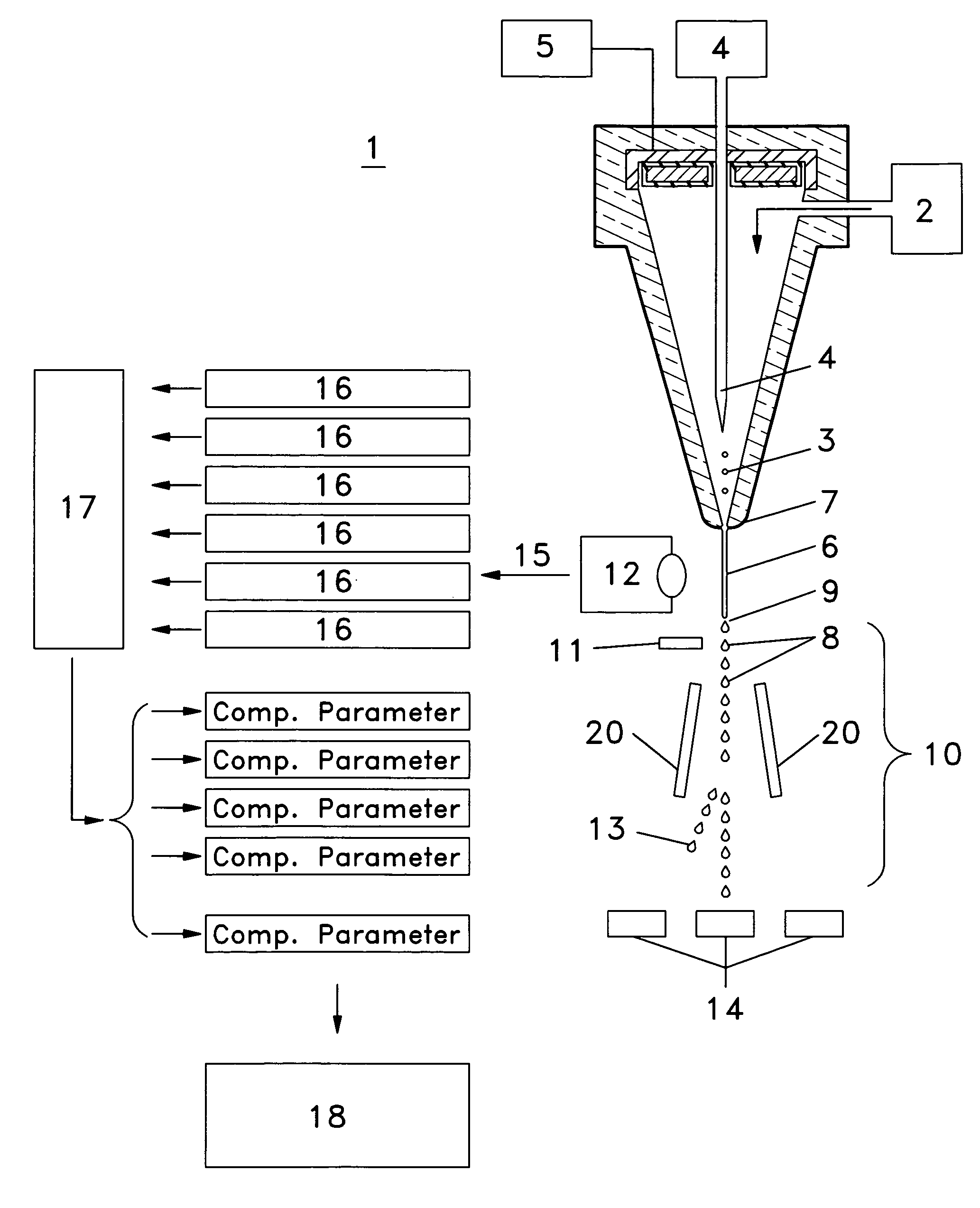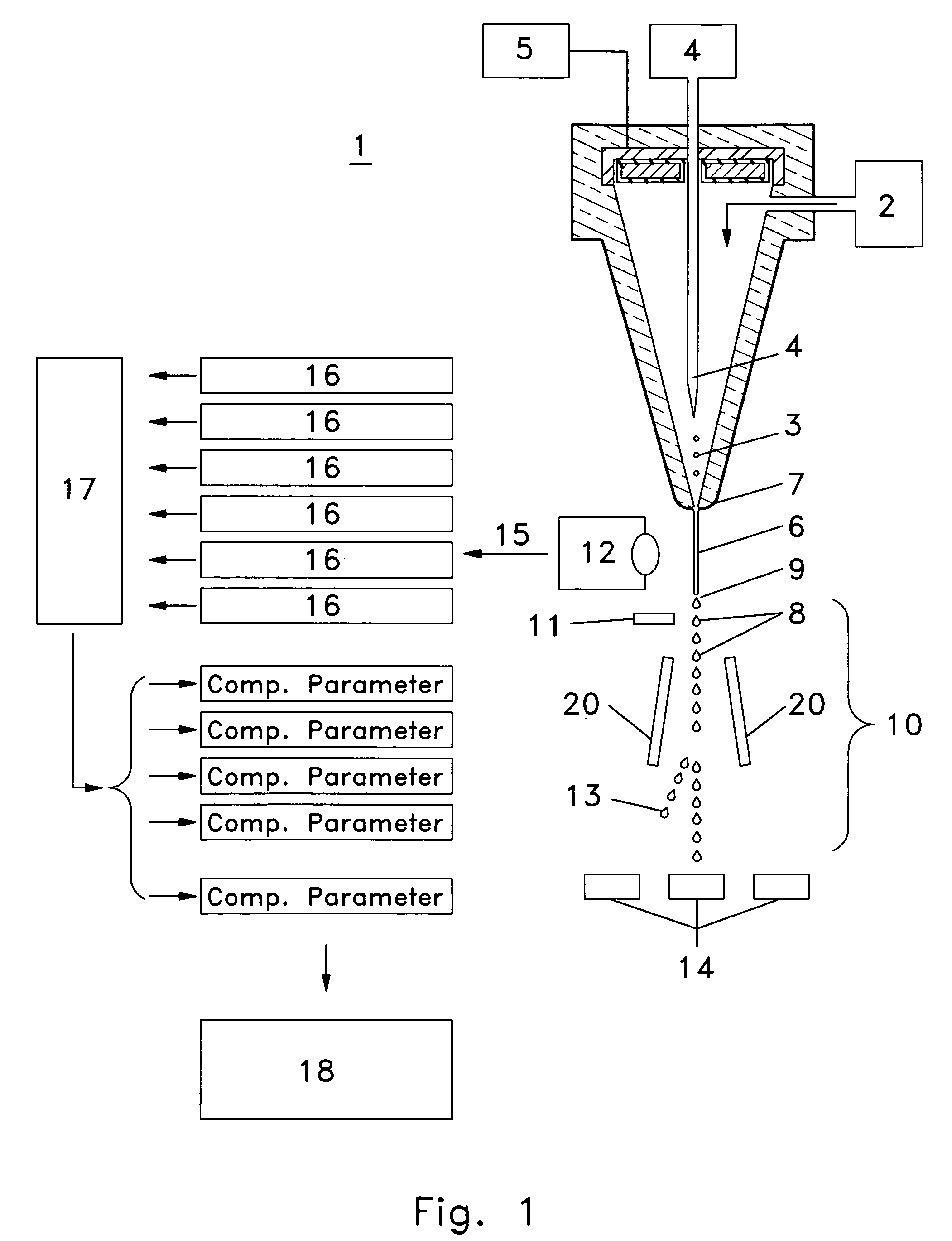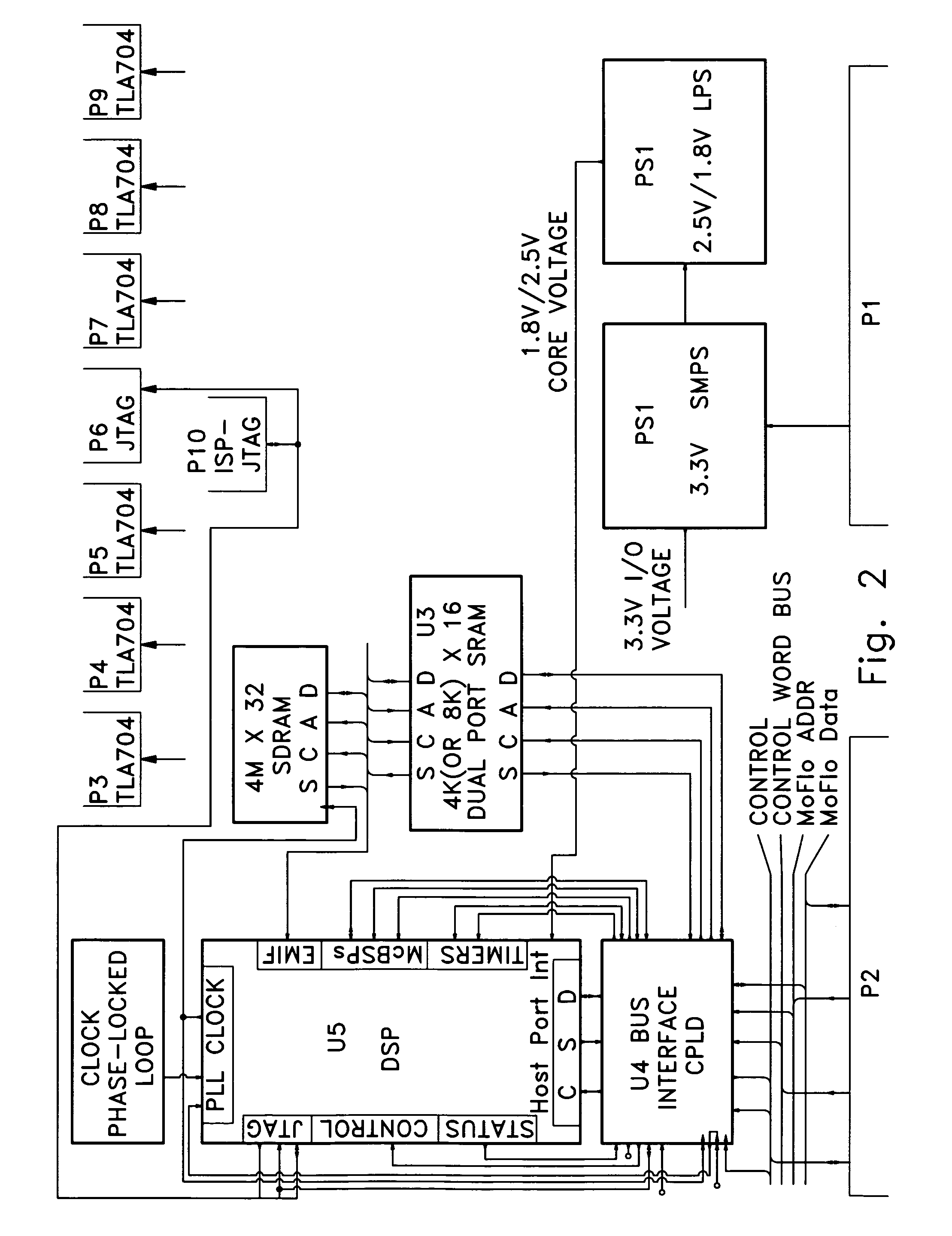Systems for transiently dynamic flow cytometer analysis
a flow cytometer and dynamic technology, applied in the field of flow cytometry, can solve the problems of inability to detect and analyze data generated from an event in an extremely short period of time, the effect of minimizing errors, extending compensation, and beyond the practical capability of analog circuit design
- Summary
- Abstract
- Description
- Claims
- Application Information
AI Technical Summary
Benefits of technology
Problems solved by technology
Method used
Image
Examples
Embodiment Construction
[0031] Specifically, an enhanced flow cytometer utilizing DSP technology and methods to process raw or original signal information incident to various parameters during operation, including, but not limited to, environmental parameters, instrument parameters, or parameters incident to the particles or cells entrained in a sheath fluid stream allowing for complex assessment, differentiation, assignment, and separation of such particles or cells, even when the flow cytometer is operated at high speed. Generally, a data acquisition, data transformation, parameter compensation, and compensated parameter utilization system for the differentiation, assignment, and separation of multiple parallel or serial events that can be useful in numerous fields and applications.
[0032] In discussing these aspects of the invention some references may be made to MOFLO® (a trademark of Cytomation, Inc.) flow cytometer systems and SUMMIT® (also a trademark of Cytomation, Inc.) capabilities for such syste...
PUM
 Login to View More
Login to View More Abstract
Description
Claims
Application Information
 Login to View More
Login to View More - R&D
- Intellectual Property
- Life Sciences
- Materials
- Tech Scout
- Unparalleled Data Quality
- Higher Quality Content
- 60% Fewer Hallucinations
Browse by: Latest US Patents, China's latest patents, Technical Efficacy Thesaurus, Application Domain, Technology Topic, Popular Technical Reports.
© 2025 PatSnap. All rights reserved.Legal|Privacy policy|Modern Slavery Act Transparency Statement|Sitemap|About US| Contact US: help@patsnap.com



